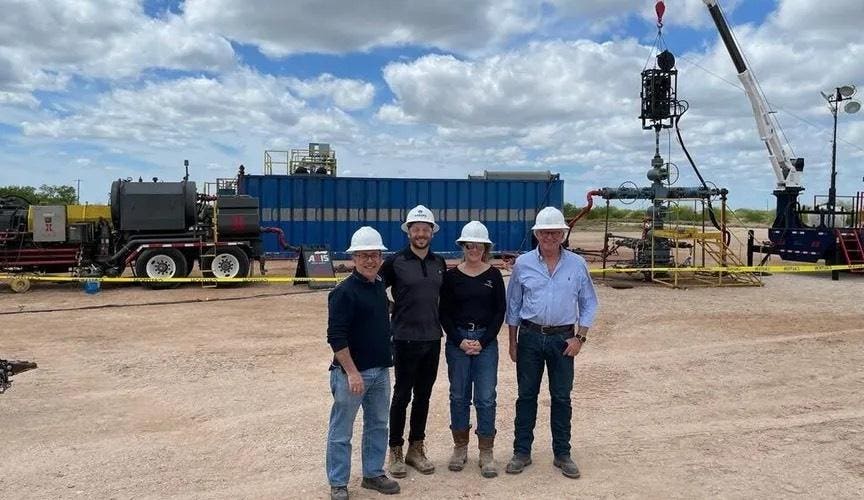One of the chief challenges that will have to be solved if the world is to engage in a real energy transition is the one of displacing baseload power generation currently provided by natural gas, oil and coal with some form of zero-emission generation.
The current array of proposed solutions to that issue consist mainly of nuclear generation, which is costly and can take 10 to 15 years to permit and build, or renewables like wind and solar, weather-reliant sources whose intermittent nature must be somehow solved to be truly scalable and viable. For renewables, the focus of solutions thus far has centered on stationary battery technology, with lithium-ion making up the bulk of installed capacity thus far. But lithium-ion tech suffers from weather-related issues of its own, and billions are being invested in research and development into alternatives like vanadium, solid state and liquid metal technologies that have seen varying degrees of success to date.
Can Geothermal Provide The Storage Solution?
Now, another alternative is on the horizon. The viability of geothermal projects to provide energy storage at scale and competitive cost has been gaining momentum in recent years, and I was able to discuss this and other geothermal-related topics in a recent interview with Cindy Taff, the CEO of Sage Geosystems, Inc. Based in Houston, Sage has developed a proprietary CO2 turbine that it says doubles the amount of electricity that can be created from geothermal heat when compared to the current technology.
As important as electricity generation, though, is its potential to serve as a storage mechanism for electricity generated by renewables. “I think it is important for us to educate not only on what geothermal is and how it can be sited just about anywhere in the world, but also about energy storage and how it can be combined with solar to expand its capacity for producing electricity,” Taff says. “When we are able to put our energy storage together with solar, we can actually generate baseload power. Solar plus our energy storage gives you 24/7 baseload.”
Taff told me she’s excited by the results of several tests Sage has run in Starr County, Texas, which sits at the southern extent of the Eagle Ford Shale region on the Rio Grande, saying, “I am really excited about what we’re doing. We’re looking to do our first demonstration pilot plant in first half of next year.”
The main limiting factor for traditional geothermal applications has been the requirement of finding sites whose underground geologic structures contain both the high heat needed, combined with a co-existing water source that can hydraulically drive that heat to the surface in the form of steam. Taff notes that this combination of elements required by conventional geothermal exists in only 2% of the Earth’s surface.
A Combination Of New And Long-Existing Technologies
Sage deploys an enhanced geothermal system using a combination of off-the-shelf oilfield equipment and proprietary technology to capture geothermal power from any underground formation where the required heat level exists. The beauty of this approach is that the oil and gas industry has been drilling into many suitable formations for decades now, and that project execution requires the same basic fields of expertise used in the oil and gas business since its inception.
“It’s contained in formations that the oil and gas industry has drilled to these depths for many, many years,” Taff says. “For example, the Starr County test well that we have was drilled in 2008 to a depth of 19,000 feet and almost 500 degrees F. That’s plenty of heat right there to have a commercial installation.”
The next challenge, she says, comes in determining “how do you cost effectively then harvest that heat out of the earth and then bring it to the surface, and then cost effectively convert that heat to electricity? That’s the challenge that the geothermal industry has faced for about 40 years.”
Once the well is drilled into the target formation (the process can even sometimes tap into pre-existing wellbores, thus cutting costs), Sage then deploys what Taff calls a “cycle of injection and production” similar to “huff and puff” pumping systems used by the oil and gas industry for many years.
Because selling electricity into a pre-existing electric grid can often be complex and challenging, Sage is developing a micro-grid strategy that envisions servicing facilities, projects and areas currently struggling with limited available electric capacity or to meet ESG goals. Some parts of South Texas and the Permian Basin region have been coping with limited electricity availability for years now.
“Our technologies do not have to connect to the utility grid,” Taff says. “We can have microgrids or what we call island grids, which are right behind the meter and servicing an industry or a facility that needs energy and they don’t want to be on the grid. If we’re wanting to connect to the utility grid, one of the biggest challenges is the current wait time for getting that connection, and also for sourcing some of the equipment required. For example, the lead times for acquiring transformers and switch gears are 12 to 18 months in some cases. That’s one of the biggest challenges we have.”
The Bottom Line
The entire energy transition is, of course, filled with challenges like the ones Taff talks about related to geothermal. And to play Devil’s advocate here, the story of the energy transition to this point has been one too often characterized by promises of technological miracle solutions to energy issues that have remained intractable for decades, few of which have ultimately been kept.
While it is possible that this new generation of geothermal solutions could also run into unforeseen limiting factors, it is hard not to come away encouraged, even excited, after listening to Cindy Taff explain how and why she believes geothermal is going to work. The proof will be in the pudding, and we will follow up on this story at key inflection points. Stay tuned.
Read the full article here





